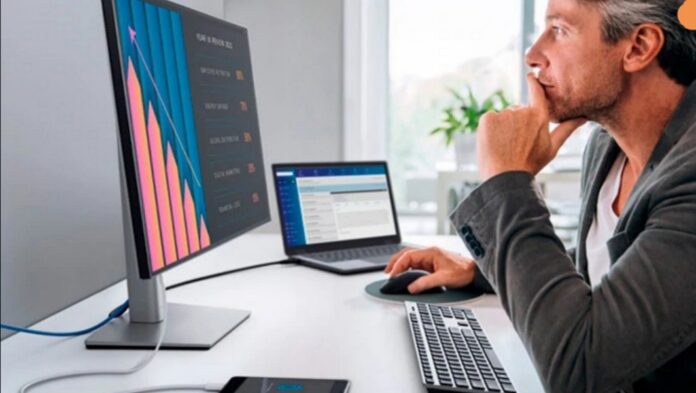
A NEW survey has revealed that remote work is likely to become the norm, with many organiations rethinking their workplace policies
The survey, conducted by Forrester Consulting and commissioned by Dell Technologies aimed to gauge the impact of COVID-19 on the employee experience, as well as, how organisations are supporting and enabling their employees with the right technology and tools to work productively from home.
Two-thirds (67%) of decision makers said their organisations are extending remote working arrangements for some employees even after the pandemic, while 57% said they are introducing more flexible work-from-home policies for all of their employees. However, many agree that the right equipment is key to the success of these policies and efficiency.
The survey which polled 305 knowledge workers and 155 technology decision makers explored how they have managed the changes and challenges in their transition to working from home, capturing the changing mindsets and challenges faced by both organisations and employees.
It found that apart from the change in physical location, employees are grappling with changes in ways of working, modes of communication, and the workstation equipment.
As many as 37% of workers reported a downgrade in the specifications of the monitors they are using at home. Cumulatively, these changes are distracting employees from their work, with up to a third saying that they are less productive working from home. However, despite the challenges, many employees are still not ready to return to the office, with a third citing health and safety as a reason, and almost half saying that they would like to continue working from home post-pandemic.
One of the biggest trends that emerged from the survey was that employees didn’t have the right kind of monitors at home. Up to 37% also reported a downgrade in the specifications of the monitors they use, such as moving from a larger monitor to a smaller one or laptop screen, which has had a major impact on their productivity.
Key findings also showed that as many as 38% of knowledge workers have switched from their usual computing devices while working from home — e.g., from a desktop PC to a laptop — thus creating further cognitive drain as they get used to a new device.
Monitors and multitasking
The survey also noted that employees are missing out on several advantages of having a secondary or external monitor. As many of them are spending more time on video calls, an external monitor can help them multitask and collaborate easily, with employees reporting being able to view more information simultaneously (50%), use multiple programs simultaneously without having to switch windows (46%), and complete tasks quickly (35%) and more accurately (30%).
“Employers today have the power to transform the challenges of the past few months to opportunities of growth of paramount importance,” said Haidi Nossair, Senior Director, Client Solutions Group – Middle East, Russia, Africa and Turkey at Dell Technologies.
“Rolling out a robust work from home environment will require employers to invest not only in the right devices but in the full ecosystem, starting from the right monitor and peripherals, which will increase the productivity and create a seamless remote work experience hence secure employees’ satisfaction.
“The remote workforce is here to stay, it is now up to organisations to shift their approach in response to the pandemic from ‘do it light’ to ‘do it right’ with an end to end lifecycle management strategy to foster innovation, retain and attract talents while optimizing Total Cost of Ownership,” Nossair said. – GeekWire.co.za

